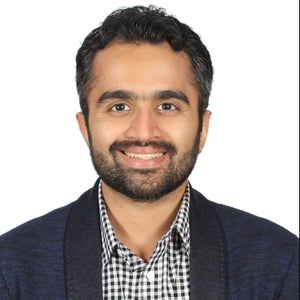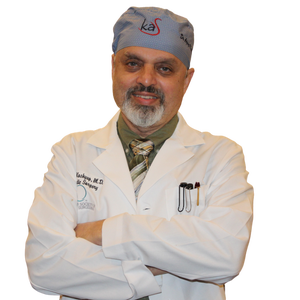
Injectables & Anti-Aging
Expert anti-aging and enhancement injections with natural-looking results
Nose Shaping Fillers (Dermal Filler Injection)
ZOH Aesthetic Clinic - Nallagandla, Hyderabad
Non-surgical nose reshaping using dermal fillers to improve nose profile and correct minor imperfections.
Lip Enhancement Fillers (Dermal Filler Injection)
ZOH Aesthetic Clinic - Nallagandla, Hyderabad
Professional lip enhancement using premium hyaluronic acid fillers for naturally fuller, more defined lips.
Blush Kiss Lips (Lip Blush)
Neoskin Clinic Banjara Hills
Professional lip blush treatment with expert care and proven results. Advanced technique ensuring patient satisfaction a...
Pinocchio Fix (Nose Job (Non-surgical))
Ambrosia Clinic
Professional nose job (non-surgical) treatment with expert care and proven results. Advanced technique ensuring patient ...
Facials & Skin Glow
Professional facial treatments for radiant, healthy skin
Soft Ombre Brows (Eyebrow Design + Microblading)
ZOH Aesthetic Clinic - Nallagandla, Hyderabad
Semi-permanent soft ombre brow technique creating a natural gradient effect. Ideal for those wanting subtle, naturally e...
Aqua Glow Facial (Facial Treatment)
ZOH Aesthetic Clinic - Nallagandla, Hyderabad
Hydrating facial treatment that delivers deep moisture and radiance to your skin. Perfect for dry or dull complexions se...
Bounce Back Facial (Microneedling)
Ambrosia Clinic
Professional microneedling treatment with expert care and proven results. Advanced technique ensuring patient satisfacti...
Crystal Detox Facial (Carbon Facial)
Neoskin Clinic Banjara Hills
Professional carbon facial treatment with expert care and proven results. Advanced technique ensuring patient satisfacti...
Laser & Advanced Technology
Advanced laser technology for skin renewal and rejuvenation
SmoothMark Laser (Laser Stretchmarks Reduction)
Neoskin Clinic Banjara Hills
Professional laser stretchmarks reduction treatment with expert care and proven results. Advanced technique ensuring pat...
SmoothSkin Laser (Laser Hair Reduction)
Neoskin Clinic Banjara Hills
Professional laser hair reduction treatment with expert care and proven results. Advanced technique ensuring patient sat...
Laser Glow Toning (Laser Resurfacing)
ZOH Aesthetic Clinic - Nallagandla, Hyderabad
Advanced laser treatment for overall skin rejuvenation and toning. Improve skin texture, reduce pores, and achieve a mor...
Porcelain Beam (Laser Hair Reduction)
Ambrosia Clinic
Professional laser hair reduction treatment with expert care and proven results. Advanced technique ensuring patient sat...
Hair Treatments
Comprehensive hair restoration and transplant solutions
Follicle Nutrition Therapy (Hair Mesotherapy)
Neoskin Clinic Banjara Hills
Professional hair mesotherapy treatment with expert care and proven results. Advanced technique ensuring patient satisfa...
Hair Fall Control Therapy (Hair Growth Therapy)
ZOH Aesthetic Clinic - Nallagandla, Hyderabad
Specialized treatment targeting hair fall with proven methods to strengthen hair and reduce excessive shedding.
Crown Revival (Scalp Micro Pigmentation)
Ambrosia Clinic
Professional scalp micro pigmentation treatment with expert care and proven results. Advanced technique ensuring patient...
Hair Transplant (per graft) (Hair Transplant)
ZOH Aesthetic Clinic - Nallagandla, Hyderabad
Professional hair transplantation procedure providing permanent solution for hair loss with natural-looking results.
Scar, Spots & Skin Correction
Specialized treatments tailored to your unique needs
Tone Perfect Therapy (Hyprepigmentation Therapy)
Neoskin Clinic Banjara Hills
Professional hyprepigmentation therapy treatment with expert care and proven results. Advanced technique ensuring patien...
Stretch Fade (Laser Stretchmarks Reduction)
Ambrosia Clinic
Professional laser stretchmarks reduction treatment with expert care and proven results. Advanced technique ensuring pat...
Forever Young Elixir (Skin PRP / GFC)
Ambrosia Clinic
Professional skin PRP / GFC treatment with expert care and proven results. Advanced technique ensuring patient satisfact...
Spot Vanish (Moles, Skin Tags & Warts Removal)
Ambrosia Clinic
Professional moles, skin tags & warts removal treatment with expert care and proven results. Advanced technique ensuring...
Surgical Procedures
Expert surgical procedures for enhanced appearance and confidence
Facelift Rejuvenation
Neoskin Clinic Banjara Hills
Comprehensive facelift surgery for facial rejuvenation. Advanced surgical techniques to restore youthful appearance with...
Liposuction Body Contouring
Ambrosia Clinic
Advanced liposuction for body contouring and fat removal. Multiple area treatment with modern techniques for enhanced bo...
Tummy Tuck Complete
Ambrosia Clinic
Complete abdominoplasty with muscle repair and skin removal. Includes pre-operative assessment, surgery, and comprehensi...
Brazilian Butt Lift Premium
Ambrosia Clinic
Advanced BBL procedure with fat grafting and body contouring. Includes liposuction and fat transfer for enhanced buttock...
Body Treatments
Specialized body contouring and enhancement treatments
Fountain of Hands (Hand Skin Treatment)
Ambrosia Clinic
Professional hand skin treatment with expert care and proven results. Advanced technique ensuring patient satisfaction a...
Youthful Hands Treatment (Aesthetic Treatment)
ZOH Aesthetic Clinic - Nallagandla, Hyderabad
Anti-aging hand treatment rejuvenating skin texture and reducing age spots. Restore youthful appearance to your hands.
Hand Rejuvenation (Hand Skin Treatment)
Neoskin Clinic Banjara Hills
Professional hand skin treatment treatment with expert care and proven results. Advanced technique ensuring patient sati...
Skin Tight & Lift (Skin Tightening + Lifting)
Neoskin Clinic Banjara Hills
Professional skin tightening + lifting treatment with expert care and proven results. Advanced technique ensuring patien...
Brows & Eyes
Expert eyebrow shaping, microblading, and eye enhancement treatments
Sculpted 3D Brows (Combination Brow)
Neoskin Clinic Banjara Hills
Professional combination brow treatment with expert care and proven results. Advanced technique ensuring patient satisfa...
Perfect Brow Design (Eyebrow Design + Microblading)
ZOH Aesthetic Clinic - Nallagandla, Hyderabad
Custom eyebrow design tailored to your facial features. Professional brow shaping and design for perfectly symmetrical, ...
Tear-Trough Glow Fillers (Under-eye Fillers)
Neoskin Clinic Banjara Hills
Professional under-eye fillers treatment with expert care and proven results. Advanced technique ensuring patient satisf...
Under-Eye Bright Fillers (Dermal Filler Injection)
ZOH Aesthetic Clinic - Nallagandla, Hyderabad
Under-eye filler treatment targeting dark circles, hollowing, and tear troughs for a brighter, more youthful eye area.
Lips & Smile
Professional lip fillers, enhancements, and smile makeover treatments
Lip Enhancement Fillers (Dermal Filler Injection)
ZOH Aesthetic Clinic - Nallagandla, Hyderabad
Professional lip enhancement using premium hyaluronic acid fillers for naturally fuller, more defined lips.
Natural Lip Tint (Lip Enhancement)
ZOH Aesthetic Clinic - Nallagandla, Hyderabad
Semi-permanent natural lip tinting enhancing your natural lip color for a subtle, long-lasting enhancement.
Rosé Kiss (Lip Pigmentation Treatment)
Ambrosia Clinic
Professional lip pigmentation treatment with expert care and proven results. Advanced technique ensuring patient satisfa...
Pillow Lips (Lip Enhancement)
Ambrosia Clinic
Professional lip enhancement treatment with expert care and proven results. Advanced technique ensuring patient satisfac...
Clinics with 1000+ Reviews
Top-rated clinics with extensive patient feedback and proven track records
Popular Procedures
Explore highly sought-after cosmetic and medical procedures
Top Specialists
Meet our verified and highly-rated medical professionals

Aniketh Venkataram
Facial Reconstruction & Aesthetic Surgery
MBBS, MS (Plastic Surgery), MCh (Plastic Surgery)

Karthik Ram
Body Contouring & Reconstructive Surgery
MBBS, MS (General Surgery), MCh (Plastic Surgery)
Sameer Karkhanis
ENT & Facial Plastic Surgery
MBBS, MS (ENT), Fellowship in Facial Plastic Surgery
Join Our Support Community
Connect with patients and doctors, share experiences, and find support throughout your healthcare journey
CloudberryPop
Anonymous2025-05-20
Liposuction Recovery - 2 Weeks and Feeling Emotional
I’m 2 weeks into my liposuction recovery on my stomach, and I’m feeling really emotional. The swelling is still there, and I’m not seeing the results I hoped for yet. I know...
MossyMoon
2025-05-15
Blepharoplasty Recovery - Day 10 Update
I’m 10 days into my blepharoplasty recovery, and I wanted to share how it’s going. The bruising is mostly gone, but...
NebulaNoodle
2025-05-10
Hair Transplant Cost - What Should I Expect?
I’m considering a hair transplant, but I’m not sure what the cost will be. Can anyone share what they paid and what...
PetalDrift
2025-05-05
Botox for Crow’s Feet - Worth It?
I’m thinking about getting Botox for my crow’s feet, but I’m not sure if it’s worth it. I’ve heard mixed things—some...
ZodiacPeach
2025-04-30
BBL Results at 6 Months - Loving My New Shape!
I’m 6 months post-BBL, and I’m absolutely loving my new shape! My butt looks so much fuller, and I feel so confident...










